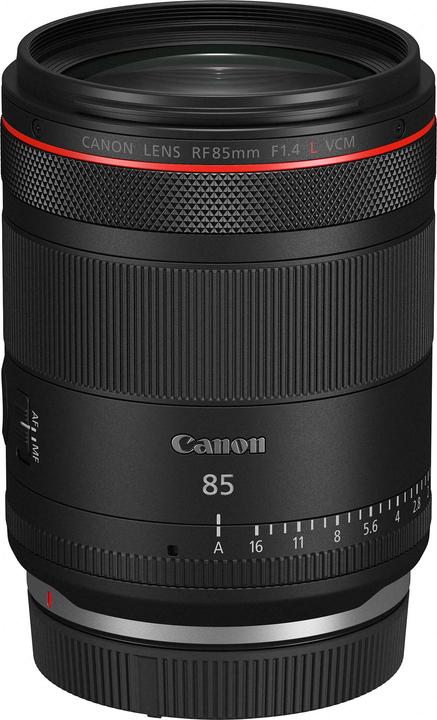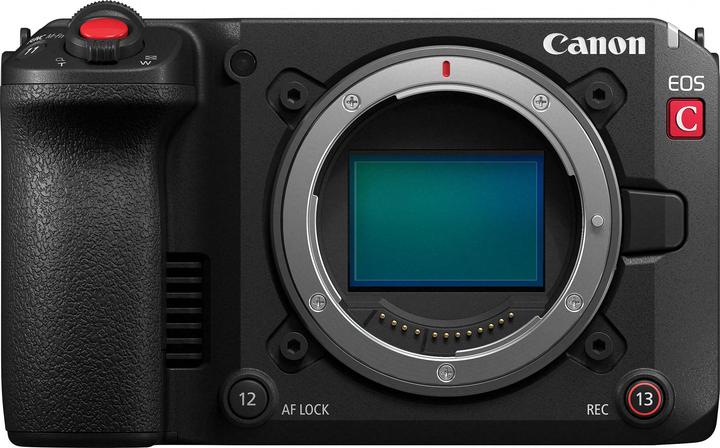
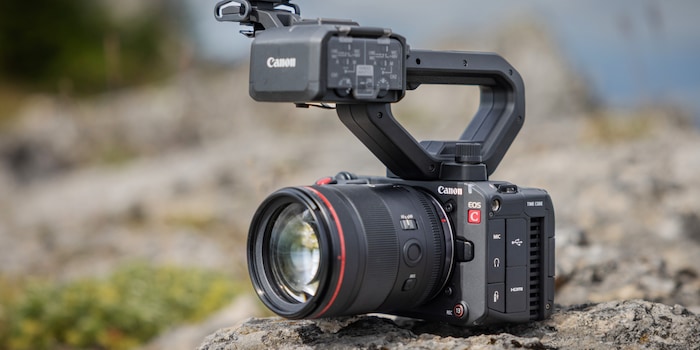
Canon EOS C50: Frontal attack on the Sony FX3
With a new video-centred full-frame camera, Canon is addressing the same target group as Sony with the very successful FX3. Compared to the FX3, the EOS C50 can film in higher resolution, but it does not have IBIS.
Canon has unveiled the EOS C50, a new mirrorless video camera with a box design. In other words: no optical viewfinder, but active cooling and several 1/4-inch threads for attaching accessories. The camera is positioned as a competitor to the Sony FX2 and FX3.

The Canon EOS C50 is aimed at content creators and professional film makers. The camera is said to be particularly suitable for mobile setups, for example for reportage situations. The housing weighs 665 grammes, is roughly the same size as the EOS R5 C without the viewfinder and offers a large handgrip. The scope of delivery also includes the carrying handle with XLR connections. The active cooling system with two inlets and one outlet keeps temperatures in check even during long exposures.
BSI sensor with 7K video, no IBIS
A new backside exposed (BSI) sensor with 32 megapixels is employed inside. Compared to a stacked sensor, it is likely to be slower and therefore more susceptible to rolling shutter effects. Canon does not provide any precise details on the readout time. The advantage of the conventional BSI design is that it costs less and should offer a high dynamic range. Thanks to dual-gain ISO (800 and 6400 in the log profile), good performance can also be expected in low light. It will also be exciting to see whether the same sensor will soon be used in an EOS R6 Mark III.
The EOS C50 can film in 7K (6960 × 3672 pixels) with up to 60 frames per second (FPS), also Open Gate (6960 × 4640 pixels) and also internally in RAW format with 12-bit colour depth. At 4K, up to 120 FPS are possible using the oversampling method. Canon thus trumps the Sony FX3 in terms of image quality. At least on paper.
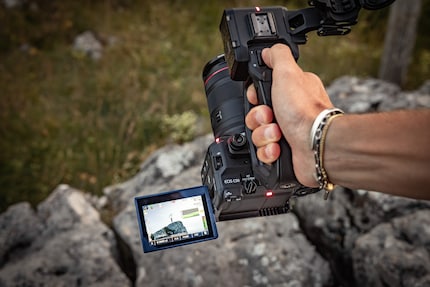
Source: Canon
As with all its cinema cameras, Canon has dispensed with a stabilised sensor (IBIS) on the EOS C50. The reason: The digital Movie IS is extremely powerful, especially in combination with the OIS of stabilised lenses. Professional productions usually rely on tripods and stabilised rigs, where a moving sensor is not desirable.
This argument is unlikely to convince everyone. Especially because Canon specifically advertises the EOS C50 for mobile setups. However, the camera will not always sit on a gimbal - and an IBIS would be extremely practical when filming handheld. Stabilised lenses defuse the situation. But not all modern Canon lenses have OIS. This also applies to the fixed focal lengths of the new VCM series, which was specially designed for video, among other things.
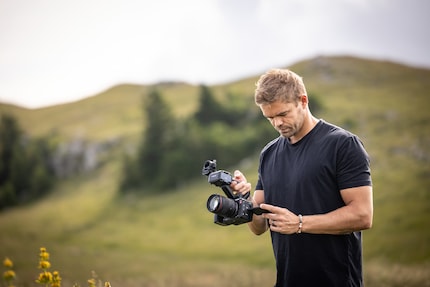
Source: Canon
Video-centred operation
The operation is primarily designed for video, with Canon using a dual menu system: In video mode, video functions take centre stage. Anyone who has never worked with an EOS C camera before will first have to get used to the menu structure. In photo mode, you get the normal menu of the EOS R cameras.
There are also many professional functions on board, such as support for anamorphic lenses, Canon's log colour profiles (cLog 2 and 3), a tally light, waveform and false colour display. However, there is no built-in ND filter as in the larger EOS C70. At 1.62 million pixels (900 × 600 pixels), the display is also smaller and less high-resolution than that of the R5 C (3.2 inches, 2.1 million pixels).
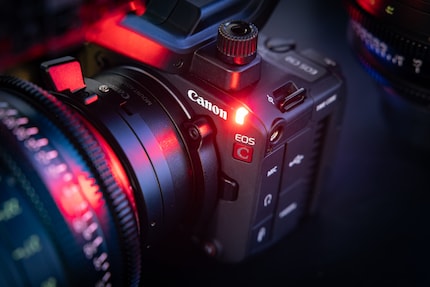
Source: Canon
Canon plans to launch the EOS 50C in November 2025 at a price of 3299 francs or 3799 euros at market launch. This means that the camera will cost slightly more than the Sony FX2 (currently 3039 francs) and significantly less than the FX3 (currently 4699 francs). With the FX2, the XLR grip also costs extra.
New lens: Canon RF 85mm F1.4L VCM
Canon has also presented a new fixed focal length at the same time as the EOS C50. The RF 85 F1.4L VCM is the fifth model in the VCM series. Just like the 20mm, the 24mm, the 35mm and the 50mm, it is designed to be equally suitable for photo and video recording, while remaining compact and delivering top image quality. The dimensions and weight of the five lenses are almost identical. Just like the filter diameter of 67 millimetres.
The focus is handled by a «Voice Coil Motor» (VCM). It is faster, more precise and quieter than the nano-ultrasonic motor (USM) in older lenses. In the new lenses, one such motor is only responsible for compensating for focus breathing. For this purpose, the second motor moves a second lens group in synchronisation with the focus motor and thus prevents a change in the image section. The Canon RF 85mm F1.4L VCM will be available from 30 September 2025 and, at 1499 francs or 1749 euros, costs significantly less than the Canon RF 85mm f/1.2 L USM.
My fingerprint often changes so drastically that my MacBook doesn't recognise it anymore. The reason? If I'm not clinging to a monitor or camera, I'm probably clinging to a rockface by the tips of my fingers.
From the latest iPhone to the return of 80s fashion. The editorial team will help you make sense of it all.
Show all